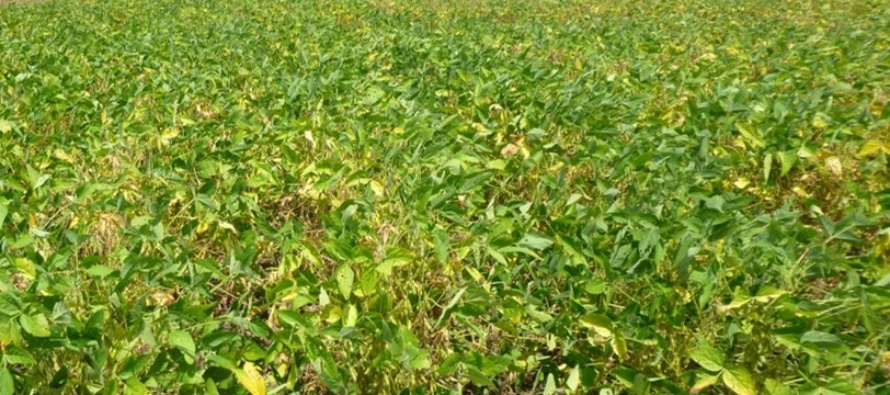Soybean Harvest Aids and other Late Season Management Considerations

Related Articles
- 2010 Soybean And Corn Variety Trial Data 3
- Rice Variety Trial Results For 2010, Plus Rice Research Report 0
- Evaluation of Peanut Prescription Rx Program in Mississippi 0
Latest Tweets
As more and more of Mississippi’s soybeans approach maturity, numerous calls regarding harvest aids and other late-season management considerations have been received. Following the overabundance of rain that many areas of the state have experienced over the last 14-21 days, one issue of concern is seed sprouting in pods. This premature sprouting can result in damage to the grain quality. While there are various factors that can contribute to this issue, one common reason for sprouting is that as the seeds increase in size, the pod walls may separate allowing moisture to enter the seed. Seed sprouting, in general, has not been observed to be a disease issue, nor has it been observed to be initiated by insect feeding on the pod. However, with extended periods of rainfall delivering excessive moisture, these issues can continue or become more severe. More detail about seed quality and response of fungicide application for prevention can be found in this article on Protecting Soybean Seed Quality. The bottom line is that if the weather will allow, a harvest aid may be beneficial to expedite harvest and minimize additional damage to the seed.
Another question related to this topic is regarding treatment for threshold levels of Redbanded Stink Bug (RBSB) in soybeans that are ready for a harvest aid. Based on information presented at the ArkLaMiss RBSB Forum on 8/17/17, it is currently recommended to treat threshold levels (4/25 sweeps) along with a harvest aid application at R7. More information about RBSB can be found through the Recorded Video From ArkLaMiss Redbanded Stink Bug Forum.
With respect to harvest aid application timing, consideration should be given to both forecasted weather conditions and crop stage. The weather forecast is an essential consideration before making a harvest aid application as certain environmental conditions may influence the time required for proper desiccation while also dictating when harvest can occur due to wet field conditions. In addition to expected weather conditions, the preharvest interval of the applied product(s) may also influence the timing of an application. Regarding the stage of crop, it is best to focus on the pods rather than the leaf color of the crop. If the majority of the pods in the field are mature with the remaining pods having seed completely separated from the pod wall, it is safe to apply a harvest aid. In addition, a greater application volume is recommended when making a harvest aid application in soybean, as coverage is essential.
As a reminder, the following are some of the products are labeled for use as a harvest aid in soybean:
| Aim EC at 1 to 1.5 fl oz/acre | When applied as a harvest aid in soybean, this product is more commonly used for morningglory desiccation. Aim EC is labeled in soybean and will not likely have significant effect as a desiccant for the crop. A nonionic surfactant (0.25% V/V) or crop oil concentrate (1% V/V) should be included. There is a 3 day preharvest interval if this product is used as a harvest aid.
|
| paraquat at 0.125 to 0.25 lb ai/acre | Paraquat will provide desiccation of both weeds and soybean. The preferred application rate is 0.25 lb ai/acre. A nonionic surfactant (0.25% V/V) should be included. For paraquat, a 15 day preharvest interval is required.
|
| Sharpen at 1 to 2 fl oz/acre | Sharpen will provide desiccation of broadleaf weeds and soybean. The addition of a methylated seed oil (1% V/V) plus ammonium sulfate (1 to 2% W/V) is recommended for optimum desiccation. Application rates of 1.5 to 2 fl oz/acre are generally required when Sharpen is applied alone. This product has a 3 day preharvest interval.
|
| sodium chlorate at 6 lb ai/acre | Sodium chlorate will also provide desiccation of weeds and soybean. However, the level of activity from this application will depend on environmental conditions at the time of application. Keep in mind that sodium chlorate is a true desiccant and will physically draw moisture out of plant tissues and seed. With that in mind, sodium chlorate should be applied 7 to 10 day before harvest. |




Let me tell You a sad story ! There are no comments yet, but You can be first one to comment this article.
Write a comment